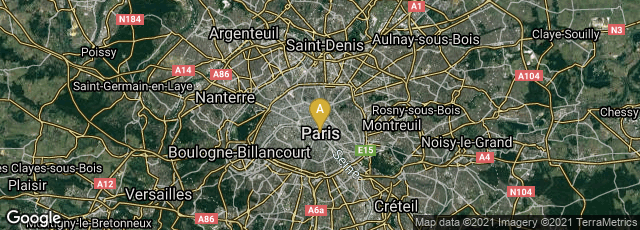

A: Paris, Île-de-France, France
The Commission Temporaire des Poids et Mesures Républicaines (Temporary Commission on Republican Weights and Measures) in Paris published Instruction sur les mesures déduites de la grandeur de la terre, uniformes pour toute la république, et sur les calculs relatifs à leur division décimale in An II [1793/94].
In 1788 the French Academy of Sciences, at the suggestion of French diplomat Talleyrand, proposed the establishment of a new universal decimal system of measurement founded upon some “natural and invariable base” to replace Europe’s diverse regional systems. This project was approved by the National Assembly in 1790 and a basic unit or “meter” (metre) of measurement proposed, which was to be a decimal unit one ten-millionth of the distance between the terrestrial pole and the Equator. In 1791 the French national assembly voted to replace the old French unit of length (toise) with this new unit. In the summer of 1792 Jean Baptiste Delambre and Pierre François André Méchain embarked from Paris to establish the definitive length of the meter by taking geodetic measurements along the Dunkink-Barcelona meridian.
In August 1793, while Méchain and Delambre were still carrying out their task, the French National Assembly “affirmed the decimal system and the meridianal definition of the meter, ordered the continuation of the work, and decreed that the Academy provide for the manufacture, distribution, and explanation of provisional meters for general use while it prosecuted its measurements. This provisional meter was defined as a ten-millionth of ninety times the average degree in France as determined by Lacaille [in 1739-40] . . . It differed from the definitive meter by about a quarter of a millimeter” (Heilbron, pp. 227-228). The definitive meter, as determined by Méchain and Delambre, would not be announced until the publication of Delambre’s Base du système métrique decimal (1806-10).
The new metric system was first set forth in two works issued in An II (Year Two) of the Republic (1793/94) by the Imprimerie nationale. The first was Instruction sur les mesures, which emphasized mathematics and theory; the second was an abridged version containing a shorter and simpler presentation of the system. On p. xxxii of Instruction sur les mesures the commission announced that these two versions would be followed by a third, which “will only present a précis of the system, and which will be printed partly in octavo format for distribution, and partly as a broadside to be displayed in public places for viewing by all citizens.” I have not been able to find a record of this third version.
Both Instruction sur les mesures and its abridged version were also re-issued by several other French publishers throughout the country; these provincial editions, of which I have never seen a definitive listing, are often confused with the true first edition.
The unnamed author Instruction sur les mesures was French minerologist and crystallographer René Just Haüy, a member of the Temporary Commission.
Hook & Norman, The Haskell F. Norman Library of Science & Medicine (1991) no. 1499. Dibner, Heralds of Science, no. 113 (citing a copy published in Macon in 1794). Heilbron, “The measure of enlightenment,” in Frängsmyr, Heilbron and Rider, eds., The Quantifying Spirit in the Eighteenth Century (1990), 207-242.